A mid-week demonstration featured Europe’s Volocopter and America’s Opener BlackFly. The two (three actually, a pair of BlackFlys flew) demonstrated their eVTOL flying capability. They could hardly have been more different.
 Billionaires are investing in, uh, what to call them? …drones, multicopters, eVTOLs, UASs, UAVs, Powered Lift aircraft, the list literally goes on and on. The lack of a widely accepted generic name is one of several indications these air taxis of tomorrow are still in a fairly distant tomorrow.
Billionaires are investing in, uh, what to call them? …drones, multicopters, eVTOLs, UASs, UAVs, Powered Lift aircraft, the list literally goes on and on. The lack of a widely accepted generic name is one of several indications these air taxis of tomorrow are still in a fairly distant tomorrow.
Two industry experts gave me their judgment after viewing the Volocopter and BlackFly demonstrations. Both agreed the Volocopter presented better, performing a true demonstration of its vertical launch then transitioning to forward flight, manuevering, and then doing a landing. Both also said the BlackFly was much less impressive. “They just kind of bobbed and floated around, not doing any maneuvering or making a transition to forward flight,” each agreed. Both wanted to like each aircraft but one clearly won in their minds.
This story is not about either of these developmental vehicles, but here are two links for those interested in the Volocopter or BlackFly.
What’s Working Today?
Electric Part 103
In the lead photo (as seen on social media and our homepage), I imply that we are in a Generation 3 of electric aircraft. I admit that is completely arbitrary. The entire field is still too fluid to assign the likes of generations but let me explain my word choice.
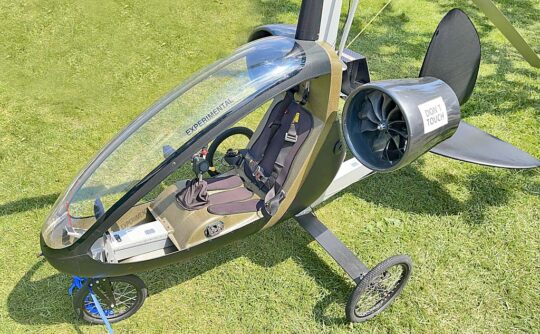 I recall when Randall Fishman made some of the first public flights (at AirVenture and Sun ‘n Fun 2007). His electric trike performed quite well and showed some clever thinking. Randall went on to more sophisticated electric designs but he was too ahead of the market. I’m calling that and similar experiments of their day Generation 1. They are modern-day pioneers.
I recall when Randall Fishman made some of the first public flights (at AirVenture and Sun ‘n Fun 2007). His electric trike performed quite well and showed some clever thinking. Randall went on to more sophisticated electric designs but he was too ahead of the market. I’m calling that and similar experiments of their day Generation 1. They are modern-day pioneers.
Then came a profusion of more sophisticated entries from around the globe. We have fixed wings, trikes, even gyroplanes that employed battery power to fly. Some of these got more elaborate. I even reported on a genuine hybrid electric C42 from Germany. I call the sum of all these developments Generation 2. These designs represent advances in electric propulsion state of the art.
At AirVenture 2021, I saw two examples of what I’ll call Generation 3 designs. These are battery electric designs but employ electric in different ways or use unconventional approaches.
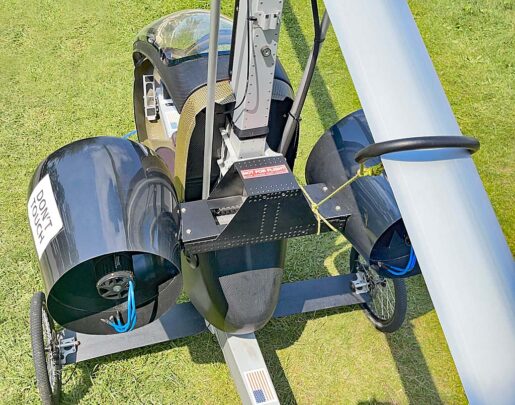 Fusion eNano — Earlier in the week, I wrote about the Fusion Nano seen in the ultralight area. This product is on-sale and presently uses a lightweight, higher revving Italian two-stroke engine (though the engine manufacturer may change). Nano is a Part 103-compliant gyroplane with a modest price tag.
Fusion eNano — Earlier in the week, I wrote about the Fusion Nano seen in the ultralight area. This product is on-sale and presently uses a lightweight, higher revving Italian two-stroke engine (though the engine manufacturer may change). Nano is a Part 103-compliant gyroplane with a modest price tag.
At the other end of the field is an electric project based on this platform. It’s clearly early stage but appears an interesting concept employing dual ducted fans for thrust. Since it isn’t done, it not worthwhile to speculate about how it will fly or what its range may be. They aren’t the first to try twin ducted fans. This Airbus project called E-Fan had a similar look.
Nonetheless, a Fusion eNano as a legit Part 103, is workable as a battery electric propulsion aircraft. I hope we’ll see it fly at a further AirVenture, but neither will I be holding my breath. So many of these electric projects don’t seem to endure, even the ones funded by billionaires to the tune of many tens of millions of dollars. I hope this one lasts; it’s intriguing.
Merlin Lite — You look at the images of Merlin Lite and it clearly has a gasoline engine up front (a Polini), so why am I including it in an electric article? Because it has a very innovative “electric assist,” I will call it. Develop Chip Erwin calls it DEP-OD, military-like nomenclature for Distributed Electric Propulsion – On Demand. These small wing motors, used briefly to enhance a phase of flight, need only a battery you can hold in your hand because they are not primary thrust power (though they add a good measure to the total).
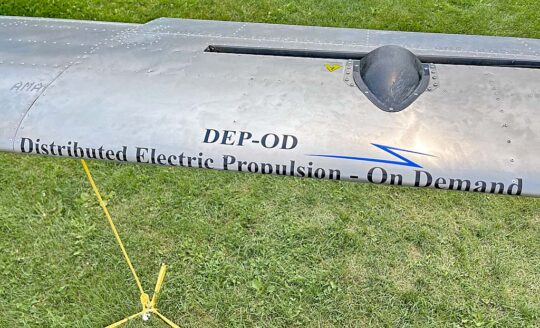
Here I will note that accelerating airflow over ailerons is very helpful to slow speed flight and not a new idea. You may have seen the photos of a modified Tecnam Twin with multiple small electric motors lined up all along the leading edge. The idea is to accelerate airflow over the entire wing so this aircraft could perform feats a conventional Twin could not.
By pushing air across the aileron, Merlin Lite with these small motors buried in the wings could maintain control down to nearly zero airspeed. The small wing mounted motor accelerates air over the wing, too, making for very, very short takeoffs. “It could cut takeoff roll by three times,” Chip suggested.
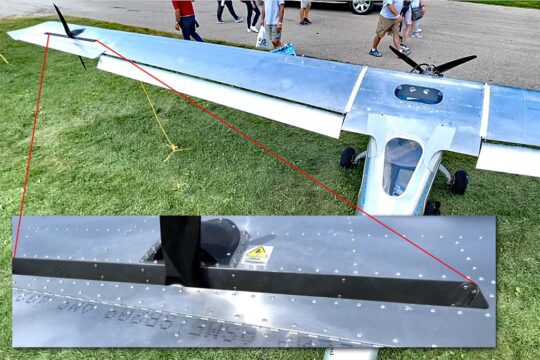
As a side note, Merlin Lite definitely will be offered with battery electric for primary thrust. Combine the wing (and possibly tail) in-wing thrust units with main power and you could have an ultralight with up to six motors, said Chip. Does that sound like a lot? Maybe, but Volocopter has 18 motors.
Electric has a future, I’m sure, but it has a present as well and it is in Part 103-type ultralights today. I’ll try to keep up for those many of you intrigued by electric.
Whatever the product timelines, these machines have large appeal.
Now something mostly for fun…
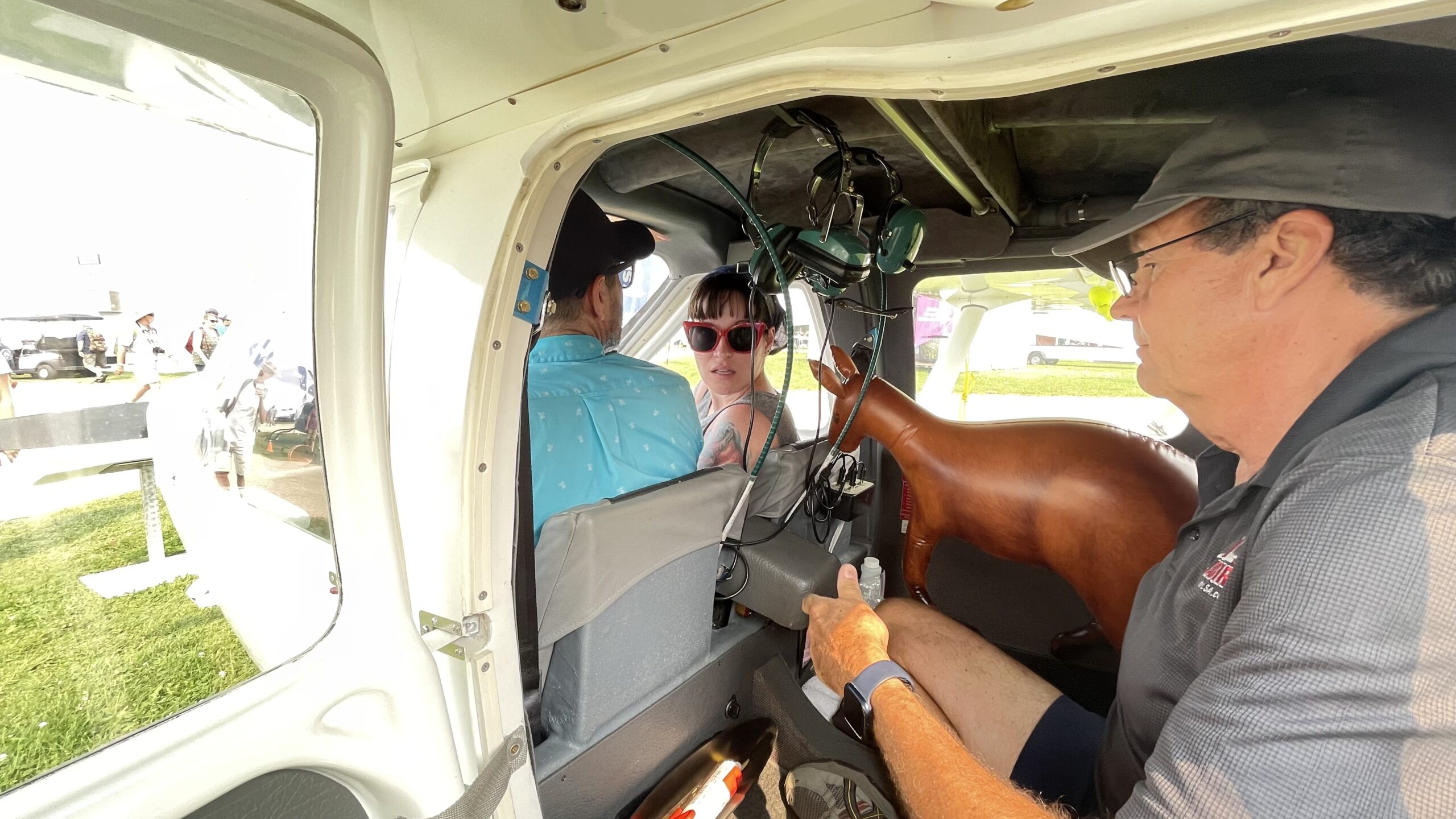
Jabiru importer and longtime industry expert Scott Severen demonstrated a rare but effective sales technique. His Jabiru J230-D has a cavernous aft cabin. It’s that large because in Australia, the same airframe can be turned into a four seater. *** Scott entered the aft cabin through Jabiru’s third door to answer question of a couple checking out an aircraft for sale. *** It appears her expression is one of approval …”Look at all that room back there!” Scott’s lanky build and tall height appeared to fit easily and he entered with ease. (Kangaroo not included.)


With all that empty space in back and able to fly with 4 people, the Jabiru four seater could be a perfect candidate for electric power, with two persons only on board.
I have a nearly completed single seat motor glider electric plane. I hope it can be at EAA someday when time to finish it allows.
“CEEP” – Chip Erwin’s electric propulsion offset.
Why no mention of the Aerolite EV 103? They’re flying demos at AirVenture and you can buy one right now…
That certainly is a wonderful choice and I’m highly supportive. However I already reported on this airplane from Sun ‘n Fun 2021, so I wanted to cover other products at AirVenture 2021.
The Aerolite EV 103 has a wing span of 25 feet? Way too long compared to the BlackFly. The Eurocopter looks more complicated than any helicopter; suggesting 3 hours maintenance for every flying hour to say nothing of its cost; probably 5 times or more greater than the production BlackFly; the production BlackFly promised at the price of an SUV. The BlackFly is truly roadable with a biplane wing span of 13 feet 7 inches. And the article comments from people praising the Eurocopter; which is unwarranted based on details here and at Opener’s website; is highly annoying. Leading people astray from what is practical seems to be the way of the Eurocopter and their proponents. And with 35,000 test flight hours and a triple redundant software control system; and 8 propellers each with its own motor; nothing appears safer than the BlackFly. Opener recently successfully tested their ballistic parachute; 4 times; which gives me qualms because now the software has a location where the motors are shut off in the air to fire the ballistic parachute; by all appearances. I requested this software location; if it exists; to be removed from all production BlackFlys. Or, we do not need Blackflys unnecessarily using their ballistic parachute due to software glitches; as long as the aircraft is under propulsion; with 8 propellers and 8 motors ; should always be under propulsion in flight. First question mark that has come up: a software glitch forcing the use of the ballistic parachute; probably a consideration for all evtols. Also, I submitted a LODA for an Opener BlackFly to FAA email: 9-AVS-AFG-LODA@faa.gov; which surprised me because this email does not appear to go to a FSDO. Do you know where this FAA email source is located? Washington, DC? Or near Washington? Not knowing who is signing off on the LODA in advance is a little disconcerting. The way of the FAA, I presume.
Got my Opener BlackFly LODA back from the FAA in a day! The email address is to the Wichita, KS, FSDO. Go figure. But, just wonderful. Happy camper so far. So now eventually it will probably depend on how a local judge interprets my LODA. Though the local police may just accept my LODA. Time will tell. Please wish me luck! The airport is 20 miles away; or not the place to fly from for a BlackFly with a 40 mile range. My LODA; all LODAs are only good for 4 years; which does not follow FAA tradition of a lifetime for a certificate use with the only exception being unlawful activity. The key is safe activity always. Meaning never endanger people or property; the same as any auto. So with triple software redundancy; a ballistic parachute, and 35,000 test flying hours; nothing appears safer than an Opener BlackFly. I am waiting on Opener to tell when my international long range BlackFly will be available for pickup.
Why is the J430 not available in the U. S. any more?
Please ask the US Jabiru representative, US Sport Planes, for the best advice, but I can imagine they may be preparing that model for the new regulations.